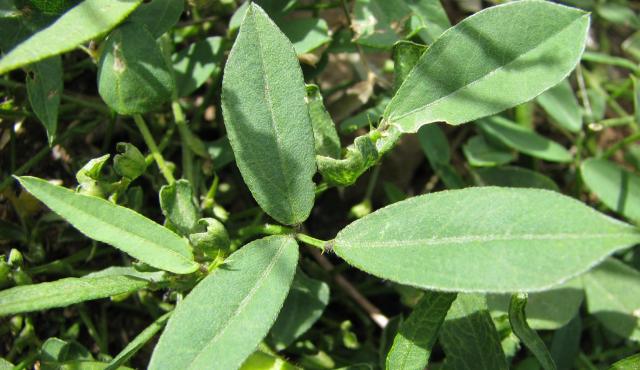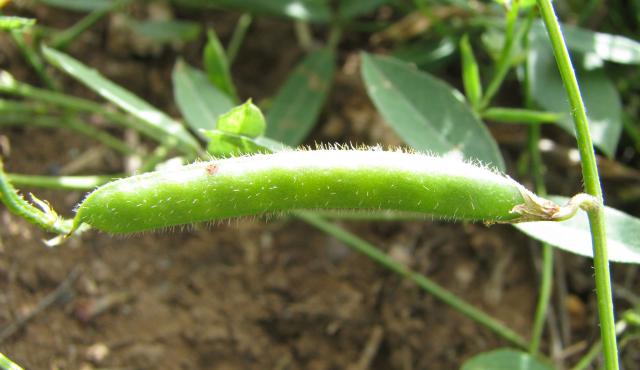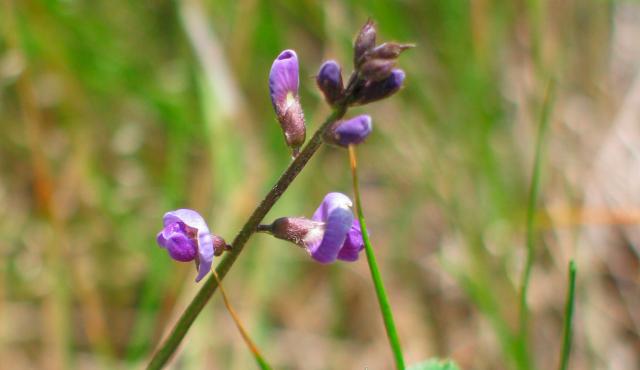


Variable Glycine
Glycine tabacina
A low spreading plant with long, slender stems, usually creeping or trailing up to 1.5 m. Leaves consist of three clover-like pale green leaflets. Clusters of 4-12 blue to purple pea-like flowers.
| Details | |
|---|---|
| Flora Type | Scramblers, twiners |
| Distinctive Features | Leaves consist of three clover-like leafletswith the end leaflet larger than the two side leaflets. Leaf has a distinct vein at an acute angle to the mid-vein. |
| Biology | The stems grow from a woody, thick root-stock on heavy soils in woodlands. Rhizobium bacteria live in this legume's root nodules and allow the plant to fix nitrogen from the air. Threatened in South Australia. |
| Native Status | Native |
| Flowering Time | Dec-May |
| Taxonomy | |
|---|---|
| Phylum | Tracheophyta (Vascular Plants) |
| Class | Magnoliopsida (Flowering Plants) |
| Order | Fabales |
| Family | Fabaceae |
| Genus | Gonocarpus |
| Species | micranthus |
Aborigines roasted and chewed the liquorice-flavoured taproot. Seed locally dispersed by ants. Hard-coated seed is long-lived (5-25 yrs) and germinates readily once scarified.
| Interesting Facts | |
|---|---|
| Similar Species | G. tabacina and G. clandestina look similar but the length of the leaflet stalks differs. In G. tabacina the middle leaflet has a longer stalk than the two either side. In G. clandestina, all three leaflet stalks are about the same length. |
| Native Status | Native |